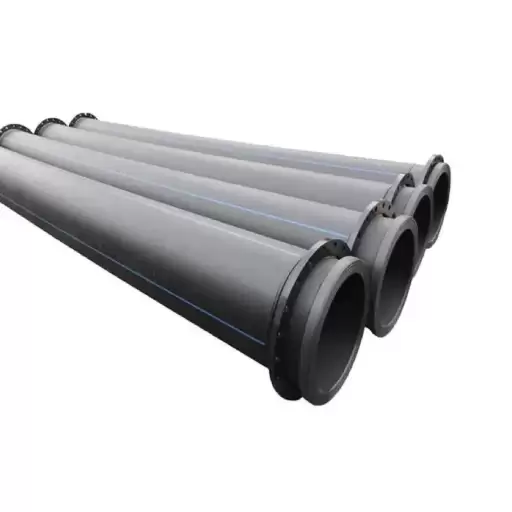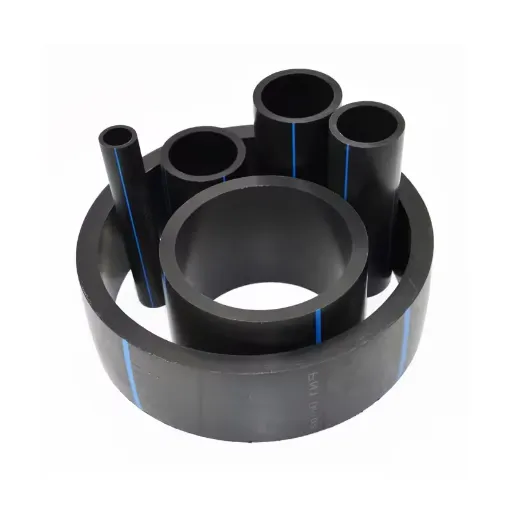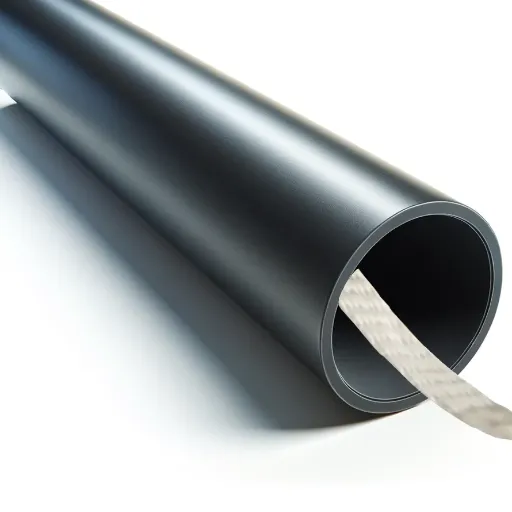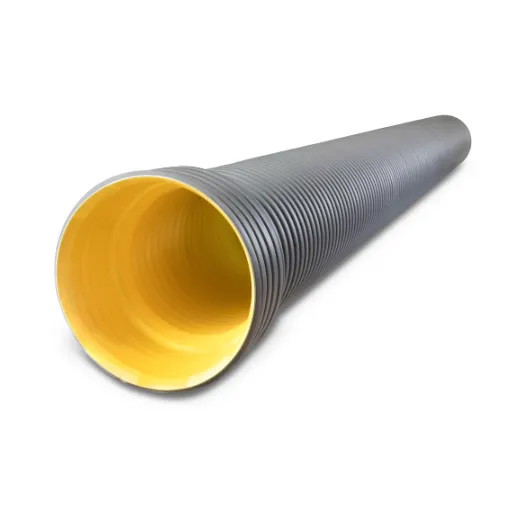High-density polyethylene (HDPE) pipes are a crucial component in modern infrastructure, offering durability, flexibility, and efficiency across various industries. Among the array of HDPE pipe sizes available, the 18-inch pipe stands out as a versatile option for medium- to large-scale applications such as stormwater drainage, sewage systems, and industrial fluid transportation. This guide aims to provide an in-depth examination of 18-inch HDPE pipes, detailing their dimensions, classifications, and wall types. By understanding these critical aspects, engineers, contractors, and decision-makers can make informed choices tailored to their project requirements. Whether you are looking to optimize durability or seeking insight into pressure ratings and joint integrity, this comprehensive resource will address all essential factors surrounding the 18-inch HDPE pipe.
What is 18-inch HDPE pipe, and how is it used?
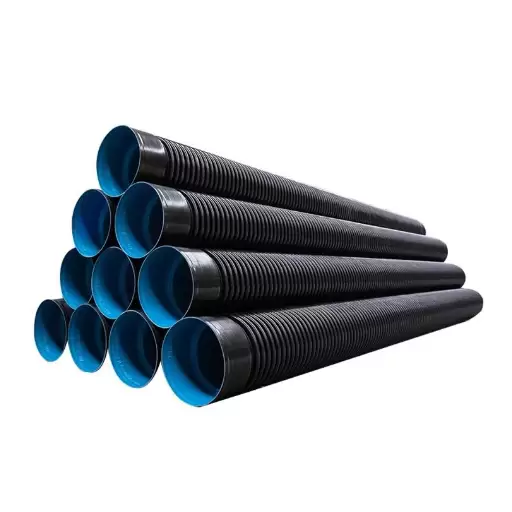
Understanding HDPE material and its properties
High-density polyethylene (HDPE) is a type of thermoplastic polymer known for its remarkable strength-to-density ratio, chemical endurance, and high durability. I can surely say that HDPE is extensively applied in pipes due to its flexibility, corrosion resistance, and ability to sustain high pressure forth and back, as well as changing environmental conditions. Rigorously, HDPE material demonstrates the following pre-requisites:
- Density: Generally, HDPE density falls between 0.93 to 0.97 g/cm³ density ratio. This value assures for construction weight free, for mechanical force its strong.
- Tensile Strength: 25-33 MPa. this strength value enables the host to handle heavy loads for specific operations.
- Thermal Resistance: Typically regarded as wide, varying anything from -40°F to 140°F (-40°C to 60°C) without losing functionality.
- Corrosion Resistance: Considering corrosion-applied HDPE is acceptable to many chemicals, regardless of acidity or basicity of salts, and this makes it very useful while transporting.
- Flexural Modulus: Around 0.8- 1.0GPa. This value provides enough flexibility measures to the pipes, enabling them to increase with any dynamic pressure applied for deformations or resiliences.
Flexibility for strength under loads carried out by applied corobwa of properties guarantees to function regularly 18 HDPE pipes in constructional systems where high reliability and durability is required like water supply, sewage and industrial piping systems.
Advantages of using HDPE pipe in drainage systems
The benefits of High-Density Polyethylene (HDPE) pipes make them ideal for use in drainage systems. First of all, they are Corrosive and Chemically Resistant.
- Corrosion and Chemical Resistance: Acids, alkalis, and salts are all harmful chemicals. Luckily, HDPE pipes are corrosion resistant, making them more reliable in the long run.
- Flexibility and High-Pressure Tolerance: HDPE pipes can withstand dynamic pressure conditions of up to 100 PSI, and some specialized grades can tolerate higher pressures of up to 160 PSI. Standard drainage applications that operate under those parameters are easily managed.
- Lightweight with Easy Installation: Compared to concrete or steel, HDPE pipes are lightweight. This makes the processes of hauling and installing easier while also cutting down on the costs of labor and equipment.
- Leak Free Joints: In fusion jointing techniques like butt fusion or electrofusion, leaks are almost guaranteed not to happen due to connections minimizing water loss and contamination risks from drainage systems.
- Long Lifespan: With proper care, HDPE pipes can last an astonishing 50 years. Because of this long lifecycle, they become more cost-effective as time goes on.
- Low Thermal Conductivity: At a rate of 0.46 W/m·K, HDPE pipes have quite a low thermal conductivity. This, in return, helps to stabilize fluid temperature while lowering the possibility of deformation due to temperature fluctuations.
Environmental Sustainability HDPE plastic waste is recycled which helps to mitigate the impact on nature during and after the service life. These items possess resistance to pressure, transfer of heat, and chemicals which makes them ideal candidates for use in reinforced drainage systems: these are the reasons why HDPE pipes are preferred over other types.
What are the different wall types available for 18-inch HDPE pipe?

Corrugated vs. smooth wall HDPE pipe
The differences between HDPE pipes with smooth walls and those with corrugated walls stem from their distinct features, which can serve different purposes.
Pipe with a Corrugated Wall
- Structure: Has a protruding profile that offers a higher stiffness-to-weight ratio.
- Applications: Handles external loads very well without deforming, which makes it a preferred choice for use in drainage, stormwater, and culvert construction.
- Performance: One of the greatest advantages is bending under uneven surfaces without losing functionality.
Smooth-Walled Pipe
- Structure: Has a cylindrical shape with no edges that enable fluid to move through freely.
- Applications: Works best for transporting drinking water, sewage, and for industrial piping systems because of their low friction.
- Performance: The absence of edges greatly decreases energy expenditure and, therefore, leads to more efficient fluid movement.
In construction projects that require the transfer of fluids, these pipes tend to perform best. Corrugated pipes are best suited with external load applications whereas pipes with smooth walls are best used where fluid transfer efficiency is most desired.
Comparing wall thickness and strength
A wall’s thickness has a fundamental impact on the strength and durability of the piping systems. In most cases, corrugated pipes are built with two layers where the outer wall is corrugated to provide strength against external factors such as soil pressure, while the inner layer, which is smooth, aids in fluid movement. The strength-to-weight ratio is experimentally and theoretically determined in space and mass-optimized corrugated pipes designed for underground use.
On the other side of the spectrum, smooth wall pipes are mostly uniform in wall thickness, allowing better performance in high internal pressure situations because they provide an undisturbed flow internally. Because these pipes have a uniform strength distribution, they are reliable for high psi-rated applications.
When you try to choose a pipe based on its thickness and strength, consideration should be given to the soil types, load-bearing factors, how much internal pressure is needed, and expected service life to guarantee that the material chosen will perform to its technical expectations.
How do I choose the right 18-inch HDPE pipe for my project?
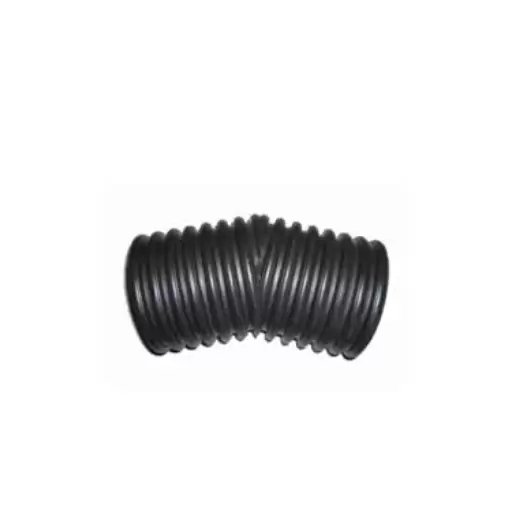
Considering pressure ratings and flow capacity
An 18″ HDPE pipe requires proper pressure rating and flow capacity for an effective project outcome. The Pressure rating showed by the Standard Dimension Ratio (SDR), dictates the ability of the pipe to resist the internal pressure caused by the flowing medium. For HDPE pipes, SDRs are usually between SDR 9 (high) to SDR 17 (low). An example is SDR 11 pipes which on average, have a pressure rating of 160 psi.
Pipe diameter and smoothness determine Flow capacity. The larger and smoother the Pipe, the lower the friction. Use Mannings equation to calculate flow rates. The Mannings coefficient for HDPE Pipes is usually 0.009. Water flow capacity estimation for an 18 inch HDPE pipe can be done based on the hydraulic grade line and slope of the installation.
- Pressure Rating (psi): Make sure that the item can work with the defined operational pressure of your system.
- Flow Rate: Take into consideration the slope of the pipe, the diameter as well as Manning’s coefficient for proper accuracy.
- Temperature Tolerance: Identify the maximum operating temperature to determine the instability of the material concerning the surrounding environment and function.
- Installation Considerations: Check the type of soil, depth of burial, and external loads to determine the failure of the pipe.
In assessing all these factors, the selected HDPE pipe meets the requirements of pressure retention and desirable flow efficiency.
Evaluating pipe dimensions and nominal sizes
When analyzing pipe dimensions and their nominal sizes, specific important factors must be addressed to achieve the best efficiency and compatibility:
- Outer Diameter (OD): The outer diameter needs to be considered along with the fixtures which have to be integrated into the system so that the proper fit is achieved. Some HDPE pipes are considered to have diameters of 200 mm, 315 mm, and 500 mm for instance, as referred in the ISO 4427 standards.
- Nominal Pipe Size (NPS): NPS is a designation as to the dimension of the pipe without considering the thickness of the walls. For HDPE grade pipes, NPS is frequently adopted to show pipe size uniformity among different uses.
- Wall Thickness: The relation of pipe wall thickness to the nominal diameter is called the Standard Dimension Ratio (SDR). SDR 9 pipes have thicker walls and are rated at higher pressure, while SDR 21 pipes have thinner walls and are lower pressure.
- Pressure Rating (PN): Different internal pressures may be used with corresponding ratings, with PN 10 providing 10 bars and PN 16 granting 16 bars. Having a pipe with a proper PN is highly important concerning the working conditions in which it needs to be used.
These limits guarantee that the structure is stable under working pressures, external loads, and hydraulic conditions. You can meet the technical requirements effectively by following the relevant procedures and using appropriate numbers.
Matching HDPE pipe to specific application requirements
To match HDPE pipes to a particular application, it is necessary to analyze the operational conditions, including pressure, temperature, and chemical interaction, and then determine which pipe specification fulfills these requirements. These requirements include:
- Pressure Rating (PN): Choose a pipe whose PN matches the maximum operating pressure.
- Temperature Range: Make sure the pipe is usable at the operating temperature. Most HDPE pipes operate effectively between -40°C and +60°C, but different materials may be needed for some extremes.
- Pipe Diameter and Wall Thickness (SDR): Choose the Standard Dimension Ratio (SDR) according to the diameter-to-pressure ratio. A low SDR means less than 0, strenuous wall characteristics, and high-pressure capacity.
- Chemical Compatibility: Ensure the HDPE pipe being used is compatible with the fluids being transported. HDPE pipes have good resistance to cids, alkalis, and organic solvents, but further consideration needs to be given to highly reactive chemicals.
- Hydraulic Performance Compatibility: The internal surface smoothness should be taken into account to maximize efficient flow characterisctics’ particular in water transport systems.
- External Loading: For underground usage, estimated soil loads and external pressure needs to be evaluated for structural stability of the pipe.
You are able to realize a reliable, efficient, and application specific HDPE piping solution by matching each factors with the designated use case and confirming compliance with relevant standards such as ISO 4427 for water supply.
What are the standard specifications for 18-inch HDPE pipe?
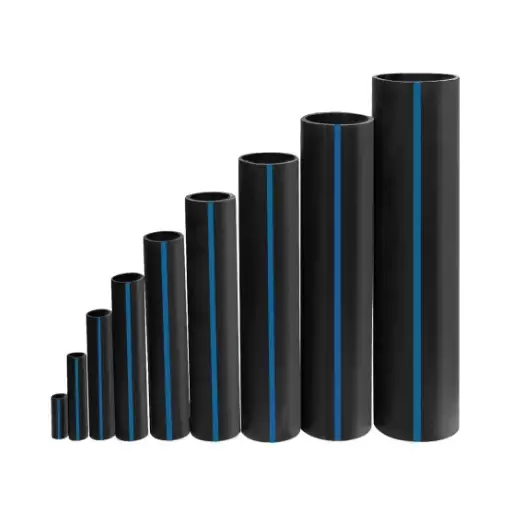
ASTM standards for HDPE pipe manufacturing
The American Society for Testing and Materials (ASTM) sets the standards for primary safety and quality features of industrial pipes. This is also true for HDPE pipes, with the 18-inch diameter ones being measured against a set of rules known as ASTM F714, ASTM D3350, ASTM F2620, and ASTM D2837.
- ASTM F714: Defines additional conditions regarding the manufacture of pipes made of polyethylene with outside diameter-based nominal sizes intended primarily for pressure applications. It determines pipe size, tolerance, and hydrostatic design basis (HDB).
- ASTM D3350: This covers the classification of polyethylene pipes into compounds with physical, mechanical, and performance characteristics.
- ASTM F2620: Joining procedures for HDPE pipes by heat fusion.
- ASTM D2837: Methodology for estimating the HDB of polyethylene pipe materials for a given period.
Following the guidelines listed above enables the manufacture of 18-inch HDPE pipes that can withstand pressure and are durable, environmentally resistant, and system-compatible.
Understanding AASHTO and local department regulations
The caveat is that AASHTO (American Association of State Highway and Transportation Officials) and local department regulations must be adhered to, especially about the specific requirements set for the HDPE pipes design, construction, and functional infrastructure performance standards. AASHTO’s primary concerns include meeting the structural and construction exigencies, which encompass dimensions, load bearing, durability, and soil interaction for the roadway and construction.
- Pipe Stiffness (PS): The stiffness of a pipe refers to how rigid it is structurally. In the case of HDPE pipes, this is said to demonstrate structurally adequate rib rigidity if it meets a minimum of 46 psi as per the ASTM D2412 requirement. It is essential to highlight that under soil and load-bearing conditions, pipes demonstrated an under minimum rib rigidity of 46 psi.
- Long-Term Creep and Elastic Modulus: Required validation using ASTM D2990 to validate deformation of materials under long-term loads is the one other requirement that AASHTO has in place for the materials.
- Abrasion and Chemical Resistance: In AASHTO M294, the pipes’ exposure to the environment as well as chemicals is retarded, Hence, pipes that conform to this specification do not undergo significant degradation and its conformance.
- Joint Performance: AASHTO R82 states that joints should be watertight or soil-tight according to the application but in the cases of hydrostatic pressure and soil infiltration, joints should meet certain parameters when testing.
In conjunction with these standards, local department requirements must also be considered that are often on-site specific like soil type, traffic load, and other environmental exposure.Assessing the municipal codes and working with authorities in charge to synchronize all technical details is imperative in the planning and execution stages. This guarantees that the performance and compliance requirements of the systems with HDPE pipes are met exhaustively.
Pipe size charts and industry standards
A pipe size guide is essential for choosing correct measurements for the installation of high-density polyethylene (HDPE) pipes, as hydraulics and structural support are key considerations. In most cases, the size includes the inside diameter (ID), outside diameter (OD), and wall thickness to fulfill certain pressure and flow requirements. As for every industry, there are specific standards, like ASTM F714 for HDPE pipes and AWWA C906 for water transmission, that cover these details.
For example, the classification of pipes is done by SDR, or Standard Dimension Ratio, which is defined as the ratio of a pipe’s OD to its wall thickness. Common SDRs, like 11 and 17, dictate the ability of the pipe to withstand internal pressure. SDR 11 pipes are used for high-pressure applications due to their thicker walls, while SDR 17 pipes are used in moderate-pressure systems. Such classifications will always ensure that the pipe is compatible with the operating pressure range and adheres to legal requirements like ASTM and ISO.
- Flow Rate (GPM): The capacity flow required sets the needed internal diameter of the pipes. Bigger IDs can suffice greater flows with reduced head loss.
- Pressure Rating (psi): Pipes have to conform to the system’s operating pressures so as not to fail. Check compliance to the specified SDR rating for adequacy in pressure sustenance.
- Temperature Range: As stated, HDPE pipes are thermoplastic, and their use depends on the operating temperature. Make sure the pipe selected satisfies the temperature restriction as outlined by such regulations as ASTM D3350.
- Application Specific Attributes: For water, wastewater or industrial uses, check for the chemical resistance as well as the abrasion characteristics according to ASTM D3261.
The guidelines provided regarding standardized size charts, associated with applicable industry standards, make the selection procedure of the HDPE piping system effortless while guaranteeing compliance without compromising reliability and durability.
How does 18-inch HDPE pipe compare to other pipe materials?

HDPE vs. PVC and other plastic pipe alternatives
In the case of comparing HDPE to PVC and other plastic pipes, some technical features of each material provide an explanation of their respective benefits and drawbacks to aid in decision-making for appropriate uses:
- Flexibility and Toughness: When comparing other plastics, HDPE has the greatest flexibility of all, which allows for greater bending, and is ideal for broken terrains. PVC is more rigid which can be a problem in places with movement due to shifting soils or external loads.
- Pressurized Water Resistance: Ductile materials like HDPE pipes tend to have better performance under pressure surges (water hammer) than other materials. For high-pressure uses, HDPE is preferred. PVC pipes would require additional engineering considerations to incorporate pressurized spikes into the design.
- Temperature Resistance: Extreme fluctuations of temperature can be dealt with efficiently by HDPE, making it ideal for those uses. Extremes of cold can make PVC brittle, while the maximum operating temperature is lower than HDPE.
- Chemical Resistance: Both HDPE and PVC are resistant to chemicals, but for certain damaging chemicals, HDPE pipes outperform PVC pipes. Certain hydrocarbons or solvents may induce degradation in PVC pipes.
- Jointing and Leakage: Heat fusion techniques are utilized for jointing in HDPE pipes, which achieves leak-proof joints needing no maintenance. PVC pipes solvent weld or use mechanical joints which do not have the same reliability long-term.
- Lifespan and Servicing: Due to resistance against cracking and fatigue, HDPE pipes last 50-100 years, giving them far greater projected service life than PVC pipes. Under the same operating conditions, PVC pipes exhibit a significantly shorter lifespan, especially in areas subjected to mechanical stress.
- Abrasion Resistance: Because of their superior abrasion resistance, HDPE pipes outperform PVC and other comparible materials in the use of slurry or abrasive fluids.
It’s crucial to thoroughly evaluate the relevant technical requirements of your project in relationship to these material attributes to guarantee the best choice of piping systems designed for precise operational requirements.
Comparing HDPE to traditional materials like concrete and steel
A careful analysis of traditional building materials such as concrete and steel in comparison with HDPE pipes shows that the latter is more beneficial in a variety of applications due to several factors:
- Weight and Ease of Installation: Concrete and steel are significantly heavier than HDPE pipes. The density of HDPE is roughly 0.95g compared to steel’s 7.85g and concrete’s 2.4g. The low density allows for easy transport and installation while minimizing the cost of heavy machinery, making everything budget-friendly.
- Corrosion Resistance: HDPE doesn’t rust like steel does and doesn’t deteriorate in an acidic environment like concrete, making it much more beneficial from a corrosion resistance perspective. It is better suited for extremely chemically aggressive environments or applications dealing with saltwater, harsh chemicals, and even wastewater.
- Flexibility and Impact Resistance: Material flexibility is another huge advantage that HDPE pipes have over rigid materials like steel and concrete. Unlike the latter two, HDPE pipes can bend under stress, allowing them to survive ground movement, vibration, and thermal expansions/contractions without breaking. However, steel and concrete tend to be more brittle in those scenarios.
- Hydraulic Efficiency: The internal surface of HDPE pipes can be compared to that of steel and concrete pipes. The latter pipes regularly experience scaling, roughness, and internal corrosion, which reduces their flow efficiency over time. While the Hazen-Williams C-factor for steel and concrete pipes does change over time, for HDPE pipes, it remains stagnant at 150.
- Longevity: When comparing the lifespans of pipes, HDPE pipes outshine by lasting nearly a century when operated within recommended conditions. Concrete pipes are more prone to degrading and cracking, which lowers their lifespan, while Steel pipes regularly require additional maintenance.
- Environmental Impact: In comparison to both steel and concrete, HDPE’s reduced carbon footprint during production alongside its ability to be recycled makes it less harmful to the environment. Its lighter weight also results in lower transportation emissions.
The overall effectiveness of HDPE pipes in applications where cost efficiency, structural durability, and hydraulic efficiency are required underscores the primary advantages of the material. Each project must balance operational, environmental, and financial constraints to enhance HDPE’s structural efficiency and sustainable performance.
Reference sources
Frequently Asked Questions (FAQs)
Q: What is an 18-inch HDPE pipe?
A: An 18-inch HDPE pipe is a high-density polyethylene pipe with a diameter of 18 inches. It is commonly used for various piping applications due to its durability and flexibility.
Q: Why choose polyethylene pipe for construction projects?
A: Polyethylene pipe is chosen for construction projects because it is resistant to corrosion, lightweight, and has a long lifespan. It is also easy to install and maintain, making it a cost-effective option.
Q: What are the advantages of using dual-wall pipes?
A: Dual-wall pipes offer enhanced strength and rigidity, making them suitable for high-load applications. They provide better flow rates and are often used in drainage and stormwater management systems.
Q: How does the ADS N-12 pipe compare to other polyethylene pipes?
A: The ADS N-12 pipe is known for its superior performance in stormwater management due to its smooth interior wall, which ensures efficient flow. It is a popular choice for both agricultural and commercial applications.
Q: What is the significance of 18 x 20 dimensions in polyethylene pipes?
A: The dimensions 18 x 20 refer to the diameter and length of the pipe. This size is often used for larger projects requiring significant water flow capacity.
Q: Can HDPE pipes be used for both solid and dual-wall applications?
A: Yes, HDPE pipes can be manufactured for both solid and dual-wall applications. Solid wall pipes are typically used for general water conveyance, while dual wall pipes are used for systems requiring greater structural support.
Q: What factors influence the price of polyethylene pipes?
A: The price of polyethylene pipes is influenced by factors such as pipe size, wall thickness, length, and the specific type of polyethylene used. Additionally, market demand and raw material costs can also affect pricing.
Q: Are 18-inch HDPE pipes suitable for home use?
A: While 18-inch HDPE pipes can be used for substantial drainage or sewage systems in residential areas, they are typically more suitable for larger projects due to their size and capacity.
Q: What tools are necessary for installing HDPE pipes?
A: Installing HDPE pipes requires specific tools, such as pipe cutters, fusion machines, and alignment tools to ensure proper fitting and sealing of the joints.
Q: How does the wall culvert pipe feature in polyethylene pipes?
A: Wall culvert pipes in polyethylene applications are designed to allow water to flow through embankments and roadways, providing efficient drainage and preventing erosion.



